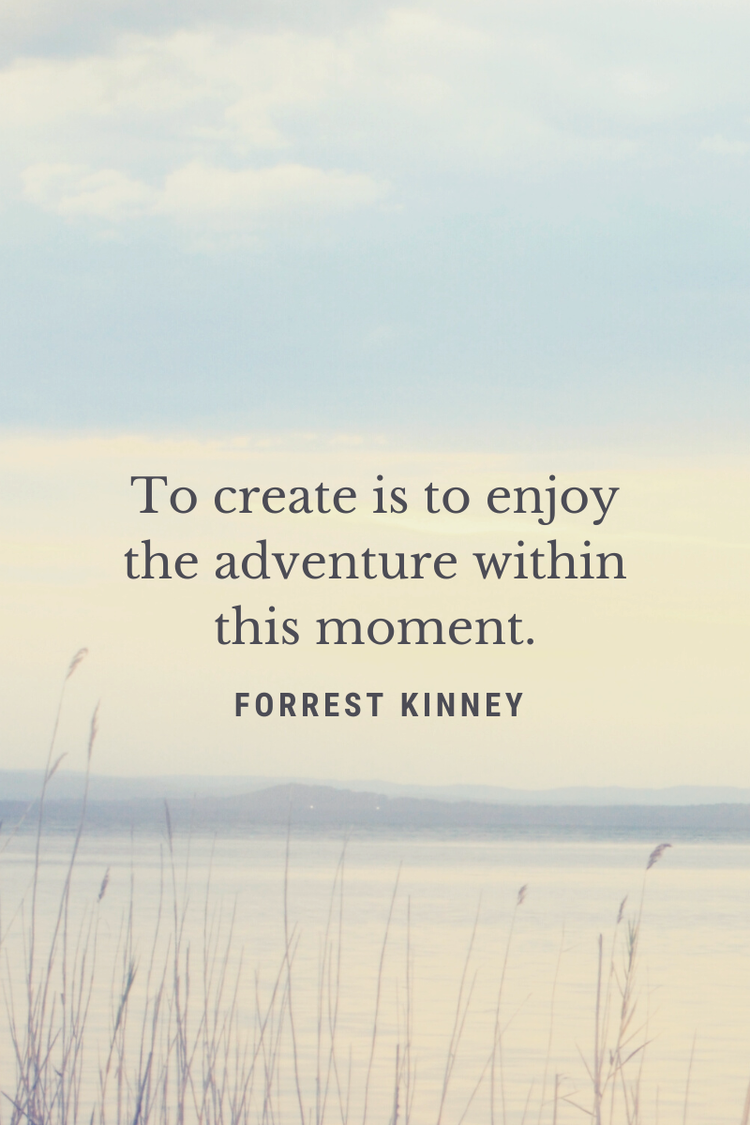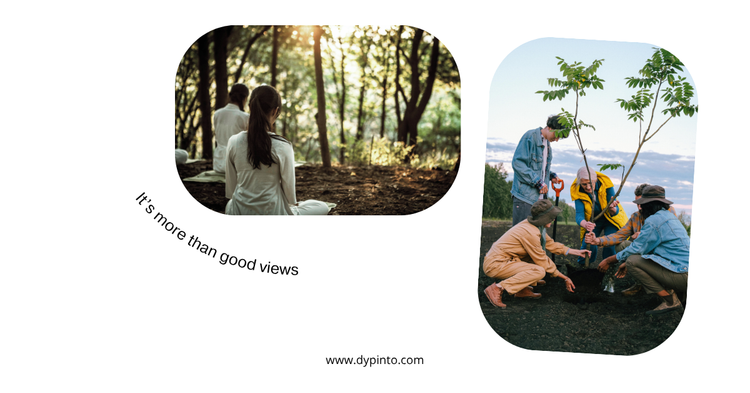Welcoming Tranquility: Lifestyle Changes for a Calm Life.

Acceptance of chaos
There are moments in life when everything seems to be messy, overlapped, and chaotic. Sometimes it feels like life will go like this forever.
But it's just that: moments. And they will pass, too.
Life changes all the time, and just as there are moments of chaos, there are also precious moments of peace.
If chaos is unbearable, you will eventually know what changes to start implementing. Don't push yourself too hard. There are moments of peace somewhere in your timeline.
Continuous presence
The approach I've found useful to live more calmly is an ongoing sense of presence in whatever I'm actively doing. Staying grounded in the present moment, just as it is. Even if it's not calm, or tranquil, or relaxing.
Calming the constant current of thoughts is one of those things that is absolutely not easy to master, but when I manage to get into this state, I suddenly feel it's incredibly easy.
If you feel like learning more about this, you can read books from Ellen J. Langer, the mother of Mindfulness, or by Eckhart Tolle, the spiritual teacher.
Personalized, ready-to-use list of calming activities
Another practice I do is creating a personalized list of things that make me feel better. Basically, whenever I detect something that improves my mood, I write it down in the list.
You can mix both staying present and building your list, while noticing when you feel calmer throughout the day, and write it down. For example, I've felt calm after doing Feldenkrais exercises and after going for a tranquil walk.
So, when you have detected what makes you calm and have written it down, you'll have an easy compass to follow when feeling stressed or anxious.
In my case, I made my list of activities for low-energy days in mind, and it has worked ever since. Following the previous link, you'll also find a thorough explanation of how it works, in case you are interested.
Trying Healthy Habits.
Most of us have heard that healthy habits are good and bad habits are just that, bad. But it's not until we consistently try good habits and see their broader impact that we realize their power.
Or we realize how impactful bad habits are when bad things start happening in our lives, like expensive health problems, the consequences of addictions, and serious financial issues.
There is calmness in the process of avoiding and solving these complicated situations. Some bad scenarios are solvable if we start building good habits. There are always external factors that could cause a mess as well, but at least we can try to build a life path that doesn't cause more problems than the ones that already exist.
I would love to say that good habits depend on one's circumstances, but in this case, I think they are pretty much the same for us humans (until science defeats it): eating healthy food (the approach may vary), moving/exercising constantly, and having good sleep time, are the most common good habits that almost always change lives for good.
Trying these habits with discipline made me realize that this is much more than living more, or keeping a certain appearance/weight; keeping healthy habits has a direct impact on energy levels throughout the day, mind concentration, and mental health.
If you don't like the general idea of "good habits", you can start with a curiosity approach. Trying just one and observing what happens might feel less tiring than doing it all from day 1.
Creating Calmness at Home
When our living space feels like chaos, it often reflects what is going on in our minds and lives. For some people, a shift in consciousness leads to an urgency to make radical changes in their living space. I think this can also function the other way: we can also create a calmer state of mind if we start by tidying up our spaces first.
A calm space looks different for every person, and it depends on our past life experiences. One person could feel relaxed surrounded by hundreds of plants, whereas another person could feel stressed by having to maintain them all! One person could thrive with minimalism, while the other could feel a sense of emptiness.
Redesigning our spaces is a deeply personal experience where we have the opportunity to reflect on what we want in life.
If you are willing to incorporate calmness into your life, think about the first things that come to your mind when thinking about a calm life.
Is it reading, with a cup of tea? Well, start with that little project: find the most comfortable chair at home, the most suitable spot, and your favorite cup or mug. Or maybe, a calm life for you means spending fun time with your children and creating memorable moments. What elements would you like to include at home to create those moments?
A book that may help you with transforming your space is "The Life-Changing Magic of Tidying Up," by Marie Kondo. It's quite a radical approach, but it has worked for me. You can read here my experience doing her method, the KonMari Method.
However, if you have small children, I think you might find it difficult. The author of the book herself has recognized that once she had children, it was much more difficult to put her teachings into practice.
Getting Closer to a Green Area
If you have the chance to move to a greener neighborhood or near a green area, go for it. (Of course, balance the pros and cons).
According to many studies, there are many benefits of living near a green area that can help you build good habits, like exercising more, and improve your general well-being.
Another alternative to be closer to nature is traveling and doing nature-close activities, like hiking. If you can, traveling to green areas will make you feel renewed and refreshed.
Traveling is beautiful, but not always accessible to all of us.
What to do then?
When not being in the position of traveling frequently (or infrequently), or living near a green area, my favorite alternative is going to parks. Never underestimate their potential. There are a lot of activities that can be done in parks.
Or, if you have a green thumb, you can transform your home's interior design into a living garden. Many low-maintenance plants thrive without a lot of attention, like pothos and sempervivums.
Final thought.
Living calmly is a combination of effort, willingness to change, and life circumstances. Sometimes we will have calmness, other times there will be chaos. The important thing is to enjoy both, and if the chaos becomes too much, start implementing some of the mentioned strategies to get out of that loop.
Join the conversation
Have you found something that has significantly given you more calmness in your life? You can complement this article with your discoveries in the comment section.
Original, human content ✔️, written by D. Y. Pinto.
Writing Process Disclaimer of this article:
Pushed by some AI enthusiasts:
1.- I tried generating this article with AI,
2.- disliked very much what I got,
3.- DELETED everything AI created,
4.- and then wrote freely from scratch 😄 🦋.





Member discussion